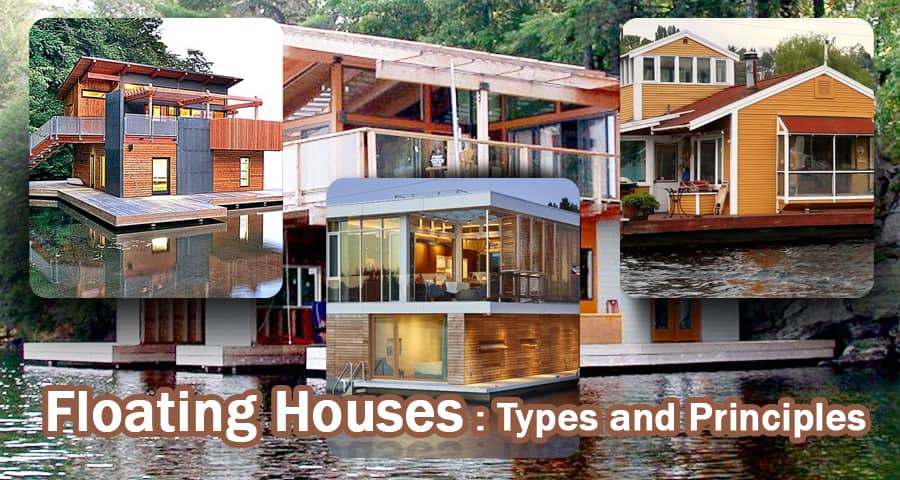Floating Houses: Types, Principles, Advantages and DisAdvantages
In foundation engineering, floating refers to when the load on the structure equals or exceeds the soil displacement by the footing so that no additional load is placed on the soil. Permanent structures such as floating buildings cannot be moved and can only be seen from one location.
A floating home can be compared to a conventional building because the load of the structure has to be greater than or equal to what the water lifts, allowing the house to float.
Define Floating House
Houses built on floats and amphibians will float in water and will adapt to increased and decreased water levels. The difference between floating and amphibious houses is that floating houses are permanently submerged in water, while amphibious houses float when the water level rises.
Floating House Workflow
A floating house can be constructed without a foundation due to its buoyancy concept. It is for this reason that they are also called buoyant houses.
Building bases should facilitate floating and support dead loads, live loads, and any other loads the house might impose. It is possible for the houses to be built on a boat, hollow pipe, lightweight pads, or any other element that makes them float and support the weight.
Floating Houses Types
Temporary Floating Houses
Houses tend to stay on the ground during the summer when there is no water and only float when flood waters are nearby. If there is no water nearby, the houses will float. It is mostly in Kerala, India, that you will find these types of floating houses.
A wooden side wall and a steel side wall are used to build the buildings. It is also necessary to use steel pistons here to prevent the whole structure from floating and sinking. Floodwaters will not damage the entire building of the temporary floating houses.
Permanent Floating Houses
The floating houses must be constructed with systems that ensure they can float even without any support. Due to the fact that it is a relatively new technique, it entails higher construction costs.

Floating Buildings Merits
Fast Construction
In addition to steel and wood, most floating structures are constructed with prefabricated components. In this way, the construction process is significantly sped up. It takes about half the time to construct a floating building compared to conventional construction methods.
Deforestation Reduction
A reduction in the rate of deforestation occurs when water space is used instead of land space.
Earthquake Resistance
Floating buildings are earthquake resistant because the water underneath acts as a seismic damper.
Low Ecosystem Disruption
Trees, wildlife, and birds are indirectly protected by floating structures. This will maintain the ecosystem's natural balance.
Transportation Ease
Floating buildings can be easily moved from one location on a water body to another very inexpensively.
Esthetic Look
The visual appeal of floating buildings is highly appealing when compared to traditional structures.
Cost Effective
By simply removing certain components and elements, such as foundations, it is possible to bring down the overall cost of building. It is about 20 to 30 percent cheaper to build floating structures than to build traditional ones.
Floating Building Demerits
High Maintenance
Traditional buildings require much less maintenance than floating ones. It is important to complete most maintenance work before the rainy season begins.
Water Pollution at High Risk
Floating structures contribute to water contamination because wastes are immediately disposed of in water bodies.
Skilled Labor Requirement
It is difficult to maintain buoyancy and keep the center of gravity at the same time. Consequently, highly qualified personnel are required to create floating structures.
Weather Change
Structures constructed on floating platforms should not be constructed in regions where the weather can be unpredictable. Climate change may cause water bodies to grow or decrease substantially, creating grave problems. High waves and tsunamis pose a significant challenge to floating structures.
Shorter Lifespan
When compared to buildings on land, floating houses have a much shorter lifespan.
Wrapping it Up
Marine life and the sea floor are not affected by floating buildings, making them environmentally friendly.
A floating building requires a greater variety of raw materials and advanced construction techniques, requiring higher technology machinery that is costly. It also requires skilled labor, which is more expensive, and since the whole system is new to society, there must be a higher demand.
For more information, please watch the following video tutorial
